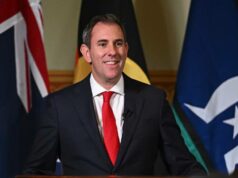Answer To Most Fundamental Questions About The Solar System

Dated : 06 Dec 2020 (IST)
Scientists in the South Australian outback have retrieved a capsule containing the first sub-surface samples from an asteroid, ending a six-year journey of more than 5 billion kilometres.
They hope the mission will help answer some of the most fundamental questions about how our solar system formed and where elements, such as water, came from.
The Hayabusa2 spacecraft had successfully released the small capsule on Saturday and sent it toward Earth to deliver samples from a distant asteroid that could provide clues to the origin of the solar system and life on our planet, the Japan Aerospace Exploration Agency (JAXA) said.
While Hayabusa1 collected dust off the surface, this was the first mission to collect rocks from underneath the surface of an asteroid.
Early on Sunday the capsule briefly turned into a fireball as it re-entered the atmosphere 120km above Earth, creating a blaze of light visible over northern South Australia.
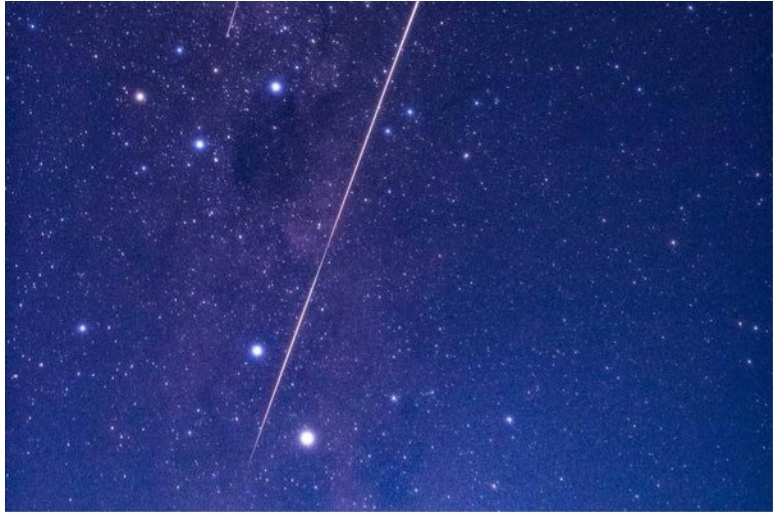
Japan’s Hayabusa2 lit up the skies above South Australia early on Sunday morning
At about 10km above ground, a parachute opened to slow its fall.
Beacon signals confirmed it landed safety in South Australia’s Woomera Prohibited Area, more than 500km north of Adelaide.
The capsule was later located by helicopter, JAXA said in a tweet.
It was collected from the landing site at about 9:00am ACDT and brought back to the Woomera Test Range.
It will then undergo a preliminary safety inspection at an Australian lab and be taken back to Japan early next week.
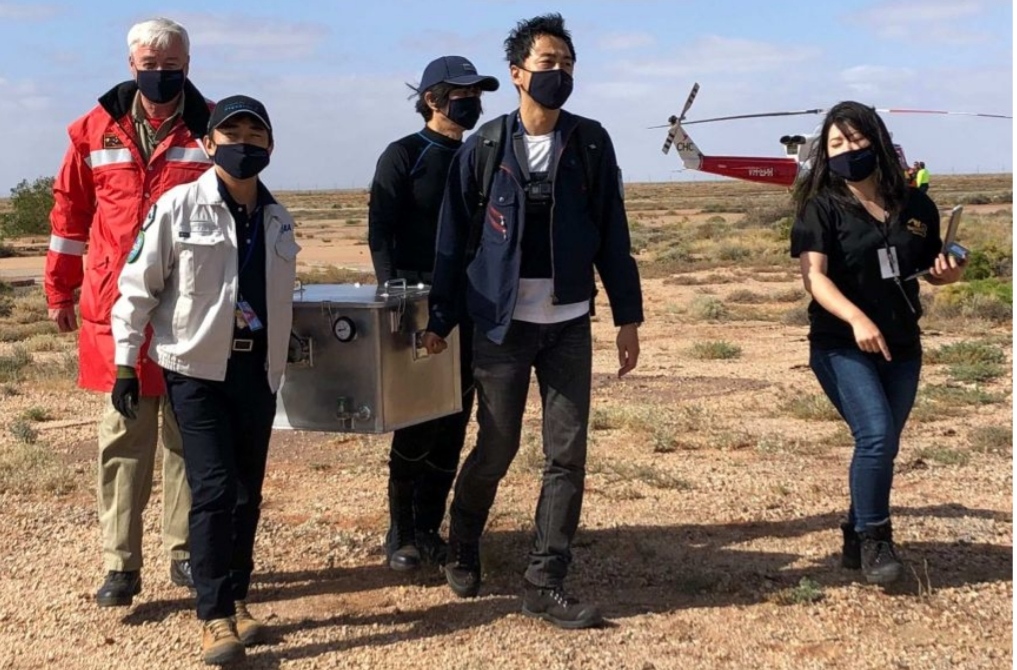
Members of the Japanese Aerospace Exploration Agency take samples from the space capsule inside at the Woomera Test Range.
Astrophysicist Lisa Harvey-Smith told the ABC this morning the landing was an “amazing technological achievement”.
“It’s not always good when space rocks fall to earth. But fortunately, this was a very controlled one,” Dr Harvey-Smith said.
“It was a very clever thing that the probe managed to do — lifting back off [the asteroid] and returning to Earth on the complicated trajectory.”
‘I’ve waited for this day for six years’
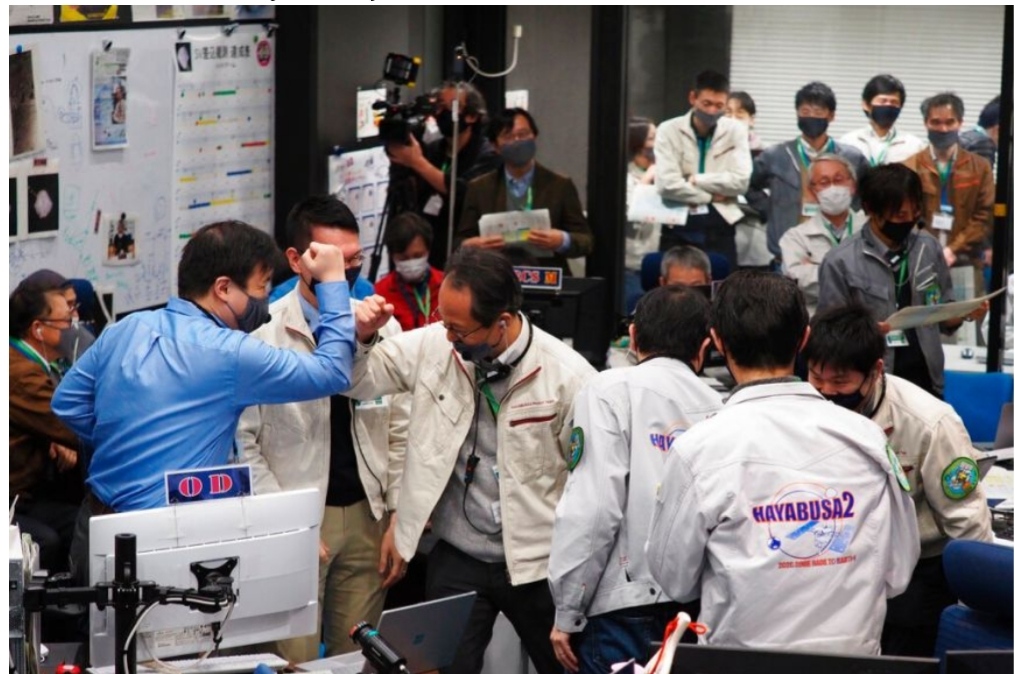
Project members celebrated the landing at JAXA mission control in Sagamihara, near Tokyo.
JAXA’s Hayabusa2 project manager Yuichi Tsuda was watching the landing with his colleagues from a command centre near Tokyo.
“It was great … It was a beautiful fireball, and I was so impressed,” he said.
“I’ve waited for this day for six years.”
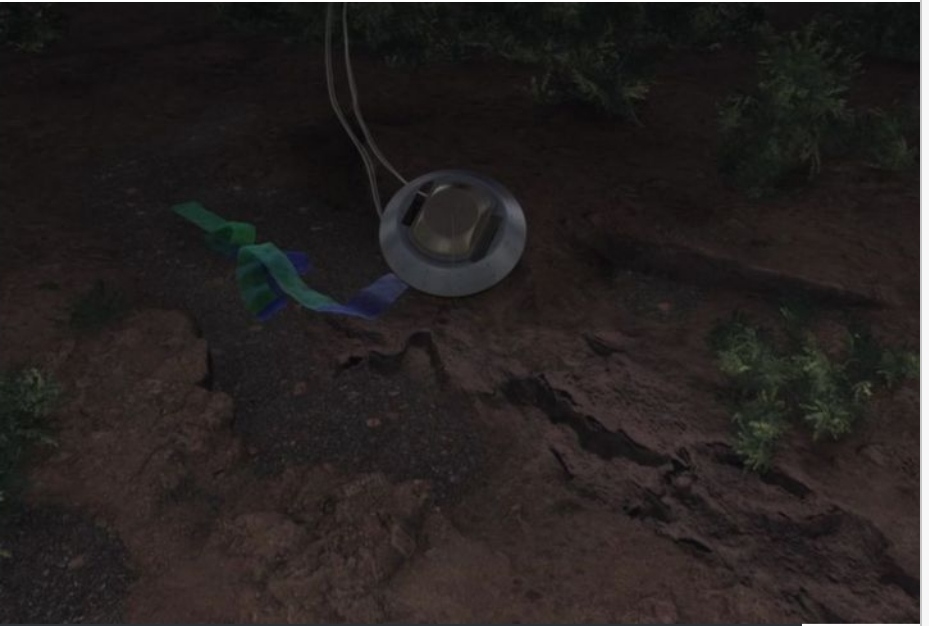
Japan’s Hayabusa2 has spent six years in space.
The spectacle was also viewed by locals in Coober Pedy as well as stargazers from as far afield as Adelaide and Alice Springs.
“This is a once-in-a-lifetime opportunity. I missed the last one I wasn’t going to miss this one,” Julie Hammermeister told the ABC.
“It was a big red, like a bubble and it was bigger than I thought it would be.”
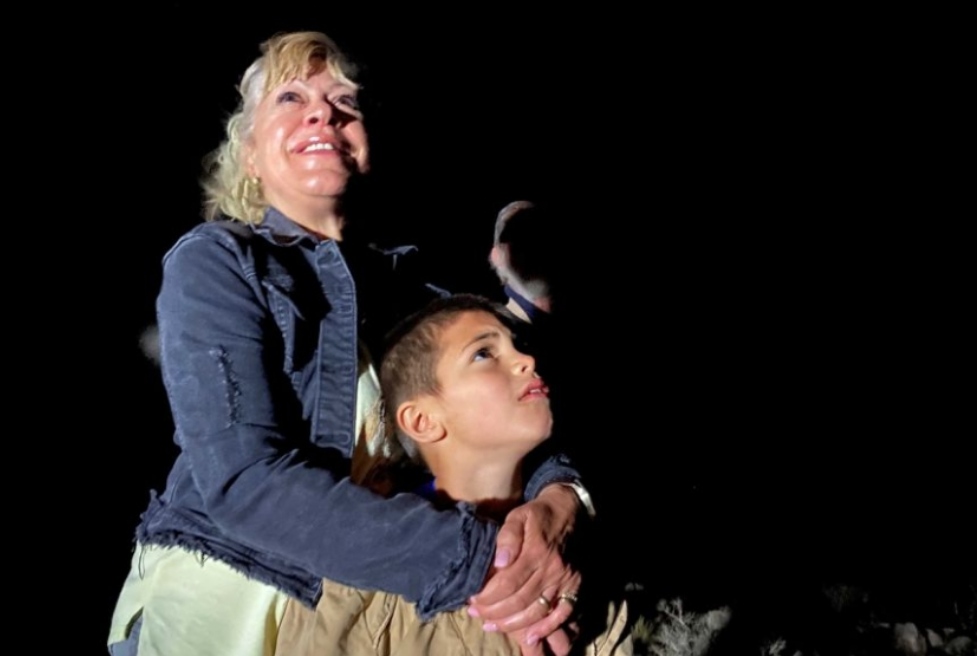
Julie Hammermeister and her grandson Archer watch as the Hayabusa2 capsule returns to Earth.
1 gram of material ‘enough’ to answer science’s questions
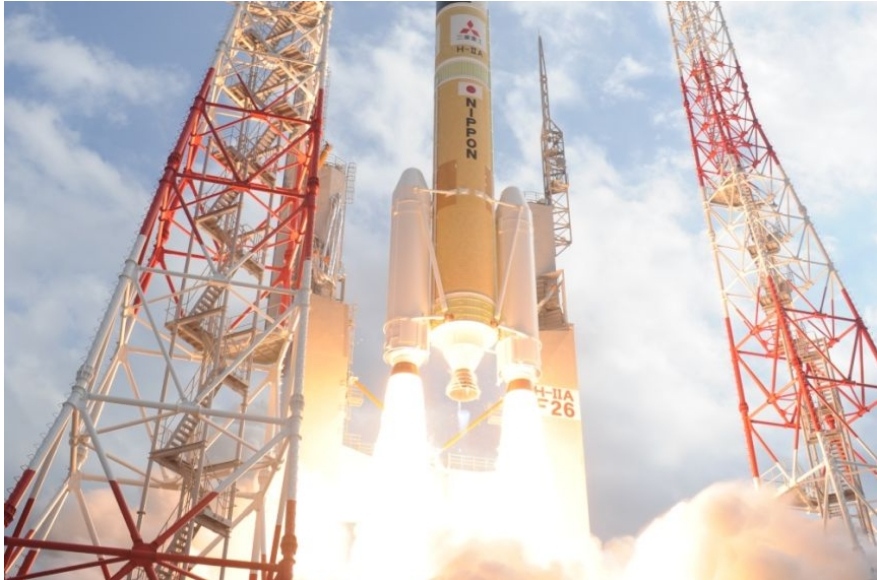
Launch of the Japan Aerospace Exploration Agency’s Hayabusa2 space mission in 2014.)
Launched from Japan’s Tanegashima Space Centre in 2014, it took four years for the Hayabusa2 spacecraft to reach its destination — the lumpy, diamond-shaped asteroid Ryugu.
Scientists said the asteroid was an example of the kind of meteorite that may have struck the early Earth to deliver the water and organic materials that make our planet habitable.
Australian National University space rock expert Trevor Ireland, who is in Woomera for the arrival of the capsule, said he expected the Ryugu samples to be similar to the meteorite that fell in Australia near Murchison in Victoria more than 50 years ago.
“The Murchison meteorite opened a window on the origin of organics on Earth because these rocks were found to contain simple amino acids as well as abundant water,” Dr Ireland said.
“We will examine whether Ryugu is a potential source of organic matter and water on Earth when the solar system was forming, and whether these still remain intact on the asteroid.”
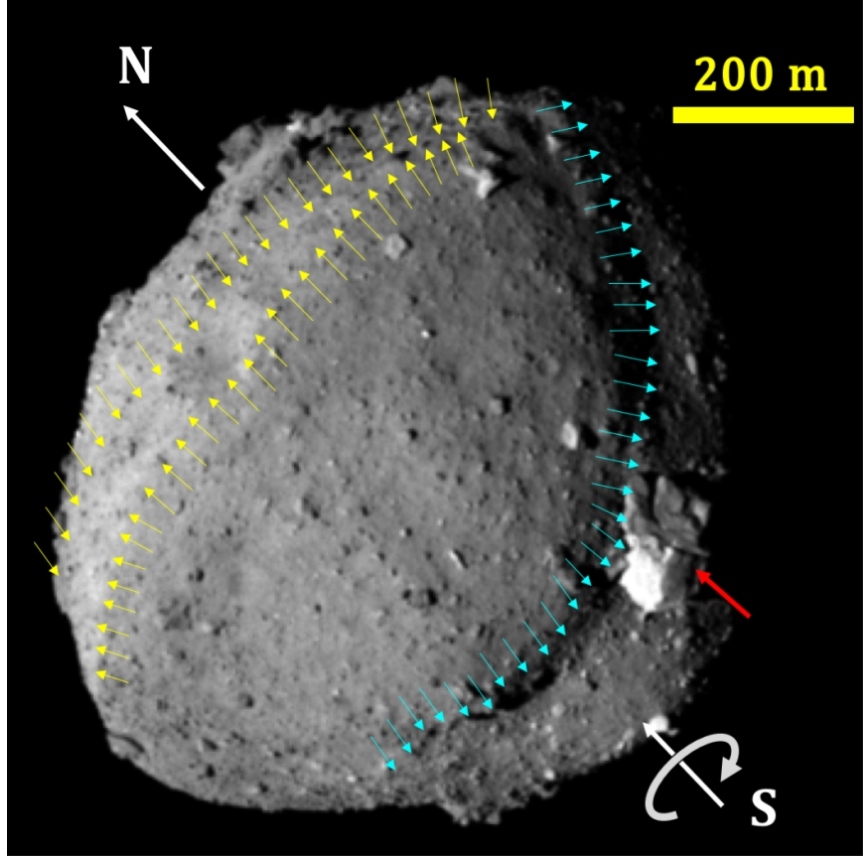
A view of Ryugu showing the ridge around its ‘equator’ (yellow arrows) and a trough (blue arrows) extending to the south pole. The spacecraft spent more than a year on the asteroid, where it picked up about a gram of space dirt.
“One gram may sound small for some of you, but for experts 1 gram is enough to address the science questions we’re hoping to find,” Professor Masaki Fugimoto of the Japan Aerospace Exploration Agency said.
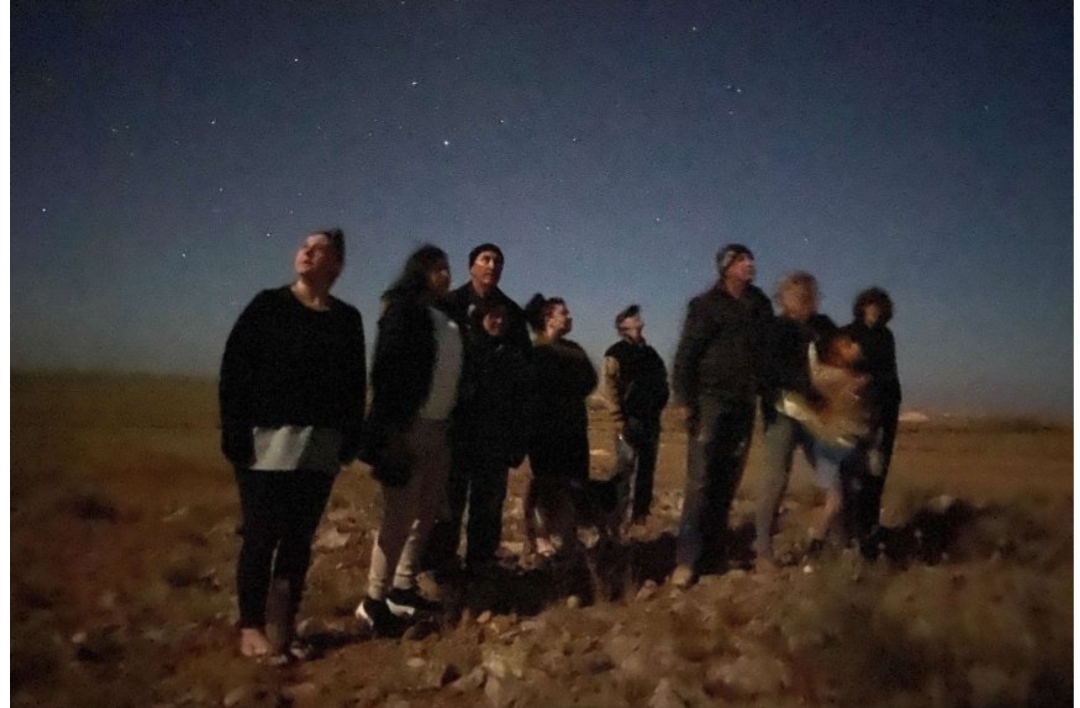
A crowd in Coober Pedy watches for the Hayabusa2 re-entering Earth’s atmosphere.
Five antennas, four marine radar stations and a winged drone were in place to help scientists track the capsule down.
For Hayabusa2, it is not the end of the mission it started in 2014.
It is now heading to a small asteroid called 1998KY26 on a journey slated to take 10 years one way, for possible research including finding ways to prevent meteorites from hitting Earth.

